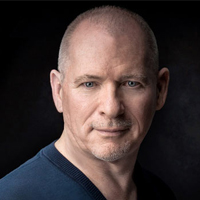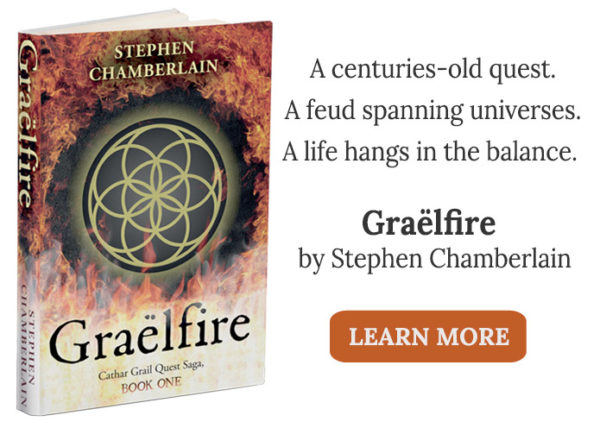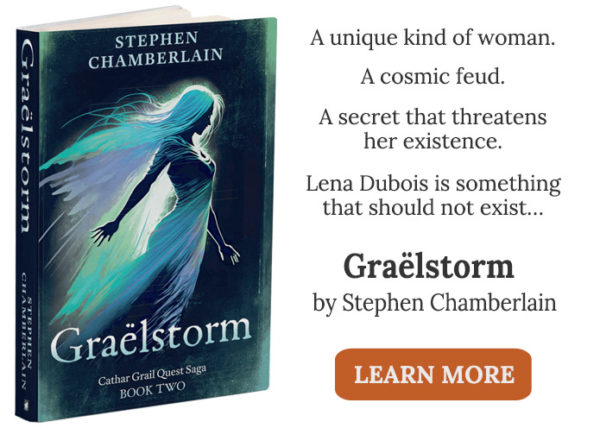“Res non Verba”
I described in “Archetypes and Stereotypes” how character archetypes perform functions in stories. Be it hero or villain, trickster or mentor — each brings something unique to the plot. But what matters is not their individual contribution. It’s how they work collectively to tell the story.
Plots need conflict as well as a cast, and what could be better than a hero locking horns with their nemesis? It’s a classic formula about right versus wrong, and when it comes to crafting the perfect villain, there’s not much to add that hasn’t been said. The Internet is awash with advice — parity with the hero, despicable motives, evil intent with a touch of humanity, not to mention comparisons between Sauron, Darth Vader, and Voldemort. I’d like to add some insights from my own writing and explain how the villain in my quest novel Graëlfire developed, and what I learned during the creative process.
Antagonist vs Villain
Before I go there, let’s differentiate between antagonists and villains. The antagonist is the true archetype; the villain is a derivative. Think of it this way: While all antagonists oppose the hero, a villain’s intentions are evil. There’s nothing immoral about a killer shark, the mother of all twisters, or asteroids about to collide with earth. Nature’s antagonists may be violent, but they don’t slaughter deliberately. And though beasts and robots might intend to kill, their actions are hard-wired by instinct or programming. Readers get this without explanation. But tyrants and dark lords bring something else to the table. Their minds know the difference between right and wrong.
The more humanlike the villain, the more some readers crave insight into their scruples and reasons. I can buy into dreams of world (even cosmic) domination, but I want to understand why villains do what they do. What events shaped them? What makes them tick? It’s about relatability, and for booklovers like me, it’s what gets us to suspend disbelief in a writer’s fiction.
You see, I don’t buy into the “born evil” syndrome. As Elrond tells his council in The Lord of the Rings: “Nothing is evil in the beginning. Even Sauron was not so.”
But villains have a handicap; they play a supporting role and are often offstage while the hero fills pages with derring-do. This unevenness creates a challenge for writers. How do we explain why our villains act as they do? How do we give them depth of character? This is where the villain’s backstory comes in — perhaps through a flashback of their formative years.
Road to Villainy
I sent the first draft of Graëlfire to my writing mentor, a novelist with a string of published novels under her belt. I was confident the manuscript had all five essentials every novel should possess: characters, setting, plot, conflict and resolution. But her attention zeroed in on the villain. “He fulfills his function,” she said, “but he hasn’t fully come alive to me.” After a few emails back and forth, it boiled down to this: Gideon Drude’s backstory was the root of the plot’s conflict, and I’d shortchanged him in terms of “screen time.” I couldn’t argue the point. Though I had his backstory all worked out in my head, I’d only used one or two flashbacks to show it. It’s a technique JK Rowling uses in her Harry Potter books. Brief sorties into Tom Riddle’s childhood show us glimpses of Lord Voldemort in the making.
The flashback tactic had been deliberate on my part. I’d written a quest adventure — a story more plot-driven than character-centric. Too much backstory would have slowed the pace, an unforgivable sin in action fiction. Even incorporating those few flashbacks had presented a challenge: what had worked for JK Rowling across a series of books seemed to lack legroom within the covers of a single novel.
The “show, don’t tell” mantra is ingrained in the brain of every writer. Amongst other things, it means we should let readers experience events as they unfold, not recount them as though in hindsight. There are a number of techniques to achieve this, but flashbacks have an advantage when it comes to a backstory. They allow readers to experience the past in real time, along with the characters’ thoughts and reactions. They make the backstory more dramatic.
And yet flashbacks come with downsides. By interrupting the flow of action in the here-and-now, they can pull a reader clean out of the story. I voiced this drawback to my mentor, but she stood her ground. “My plot was an adventure, but it was also a quest. And while all quests involve adventures, the crux is the quester’s transformation. I’d given readers only snapshots of Gideon’s story,” she said. “It was unfair to such a prime mover of the plot, and it robbed him of complexity.”
The Villain’s Arc
I knew what she meant. My hero and villain were both on a quest, and quests and adventures are different genres. Adventure plots are all about action. Their heroes don’t need to change in a meaningful way. In Quest plots, questers are never the same people who set out on the journey. An experience or a lesson alters them. To understand Gideon’s transformation and make him relatable, I had to get personal. Then came the bombshell. “What about giving him his own story arc?” she asked. “A parallel narrative that would run through the book, alternating with the main story arc.”
My heart sank. It wasn’t so much the idea of a major rewrite, than of Gideon Drude having lived down the centuries. It would mean running two timelines centuries apart while keeping the reader’s attention focused.
To cut a long story short, I trusted my mentor’s instincts and gave it a go. I began writing an arc set in medieval times during the persecution of the Cathar heresy. I saw benefits right away. Though I continued to write in a plot-driven style, I had space to showcase the Cathars and their strange beliefs — not as an info dump — but sprinkled naturally along the way. But the greatest transformation showed up in my villain. As I wrote new scenes he came to life. He gained emotional depth, and the book took on a different tone. Gideon grew more embittered and tragic. I could show how he fell victim to his choices and actions.
I won’t go into the challenge of integrating timelines. Suffice to say, villain arcs aren’t suitable for every novel, nor does every villain deserve equal screen time with the hero. My story has features that draw the two arcs together: shared characters, a quest for the same goal, and connections and parallels between my hero and villain. But if there’s too much villain viewpoint, the writer might provoke sympathy that he doesn’t intend. That approach might work where redemption is a theme, as with Star Wars’ Darth Vader, but a villain must fit the story a writer is trying to tell.
Though Tolkien threw villains aplenty at Frodo — Nazgûl, Orcs, Shelob, Gollum and the One Ring itself — he famously gave Sauron no backstory at all (to the praise of some and disapproval of others). But just as no two stories are alike, no writer pleases every reader. What I would say is this: give your villains space to develop. Show enough of their backstories that readers can believe in their motives. The more three-dimensional a villain, the more convincing they will be, and readers want characters that are flesh and blood.
Of course, backstory isn’t everything. It’s okay to let imagination fill the blanks. But if a character’s formative years are key to the plot, it’s better to show than to tell them. The “show, don’t tell” mantra reminds me of my old school motto: Res non Verba, “Deeds, not Words.” However inhuman villains look or evil their intent, mere titles won’t induct them into the Dark Lord Hall of Fame. Their deeds must match the darkness of the shadow they cast. It’s action that makes them compelling.

Stephen Chamberlain is the author of the fantasy novel Graëlfire. He draws inspiration from the impact of landscape on myth, and the association of liminality with the supernatural and magic. Stephen lives in Switzerland.



